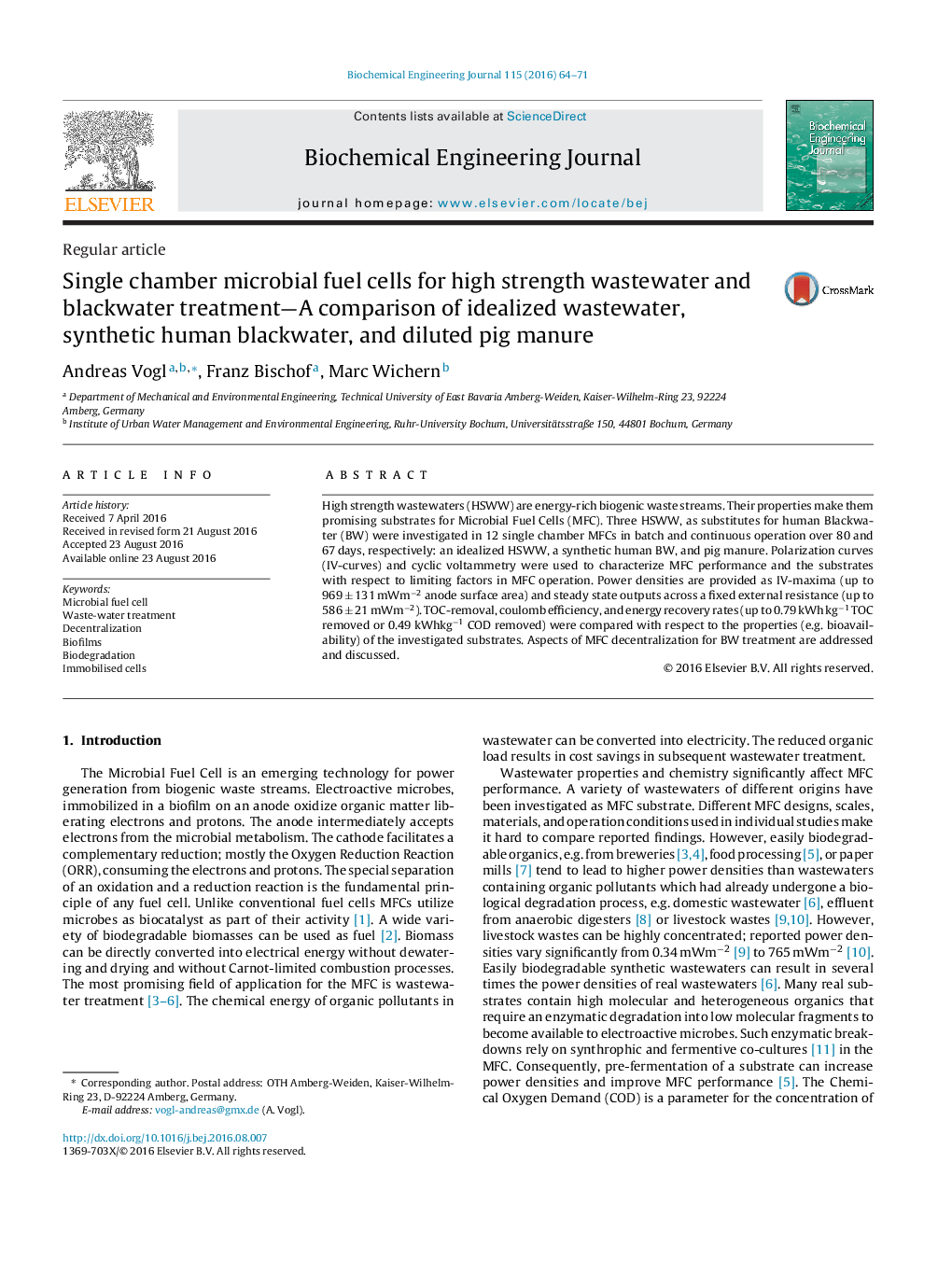| Article ID | Journal | Published Year | Pages | File Type |
|---|---|---|---|---|
| 4752222 | Biochemical Engineering Journal | 2016 | 8 Pages |
â¢Three Blackwater substitutes were studied in batch and continuous operation over 147 days.â¢Blackwater treatment is a promising field of application for MFCs.â¢MFC performance and electrochemical characterization are provided.â¢New challenges arise from MFC decentralization.
High strength wastewaters (HSWW) are energy-rich biogenic waste streams. Their properties make them promising substrates for Microbial Fuel Cells (MFC). Three HSWW, as substitutes for human Blackwater (BW) were investigated in 12 single chamber MFCs in batch and continuous operation over 80 and 67 days, respectively: an idealized HSWW, a synthetic human BW, and pig manure. Polarization curves (IV-curves) and cyclic voltammetry were used to characterize MFC performance and the substrates with respect to limiting factors in MFC operation. Power densities are provided as IV-maxima (up to 969 ± 131 mWmâ2 anode surface area) and steady state outputs across a fixed external resistance (up to 586 ± 21 mWmâ2). TOC-removal, coulomb efficiency, and energy recovery rates (up to 0.79 kWh kgâ1 TOC removed or 0.49 kWhkgâ1 COD removed) were compared with respect to the properties (e.g. bioavailability) of the investigated substrates. Aspects of MFC decentralization for BW treatment are addressed and discussed.
